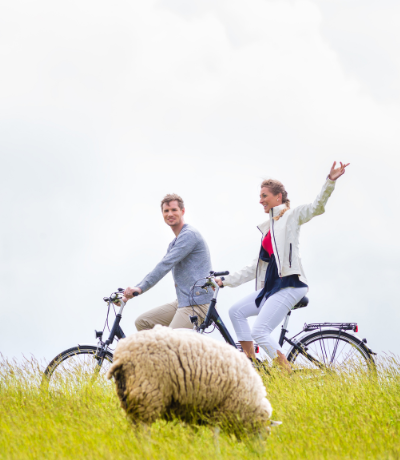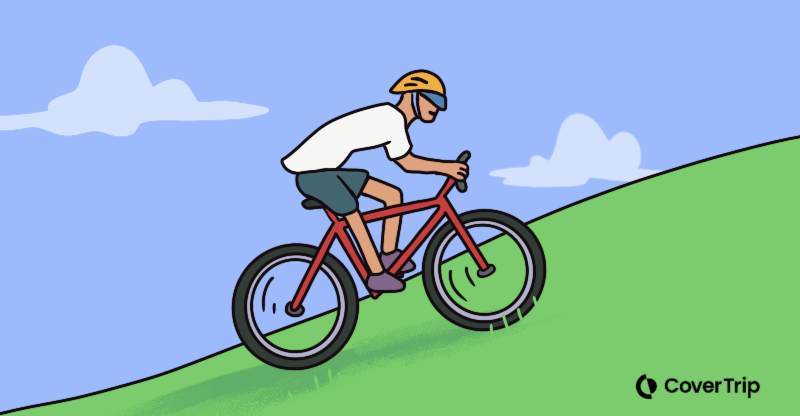Secrets for a safe bike tour anywhere in the world
2 June 2022
One trend inspired by the pandemic and the sustainability movement has become firmly entrenched in traveler’s minds.
It’s bicycle tourism.
Pre-pandemic, bicycle tourism was viewed as a strong emerging sector in global and American travel markets. More countries are developing regional bike networks, and national bike route networks are growing.
During the pandemic, when travel was halted and gyms were closed, many people invested in bikes and started getting their daily exercise out of doors. More recently, electric bikes have stepped in as the great equalizer, giving riders of all fitness levels the ability to join even a long bike tour with confidence.
This year, bike tour companies across the US and Europe are reporting high demand for bike tour bookings. All in all, 2022 looks like it will be a record year for bike tours.
If traveling by bike has taught travelers anything, it’s that there’s no better way to have an up-close and personal experience with the history, food, and culture of a region than from a bike. Plus, touring a region by bike is COVID-safe, less expensive, and easy on the environment.
If a bike tour is on your list this year, here are the top things you need to know to stay safe on a tour of any length anywhere in the world.

Be super visible – bedazzle if you must
No matter where you’re cycling, the most dangerous part of any bike tour is vehicular traffic. Even on a tour that sticks entirely to bike trails, it’s likely you’ll have to ride on some type of road for part of the tour.
In addition to following the local rules of the road, being highly visible is one of the best ways to help drivers avoid you. A fully loaded bike is pretty easy to see in good weather, but add a little moisture or a winding road and you really have to stand out.
- Wear highly reflective clothing
- Add reflectors to your bike, your shoes, your helmet, etc.
- Add lights – to the front an rear
While researching this article, I came across a cool trick I’d never heard before. To demonstrate the distance passing drivers should give you when passing, mount a brightly-colored foam pool noodle to your bike. Position it so it sticks out into traffic and watch them swerve safely around you. Now, that’s using your noodle!
Bring your own helmet
Even if you’re renting a bike in another country, you’ll want to bring your own high-quality helmet. You can never be sure how old a rented helmet is or many wrecks it has endured.
Yes a helmet is bulky to pack, but your head is worth it. The Journal of Epidemiology reviewed 40 separate studies on helmet use and found that wearing a helmet significantly reduces the risk of head injury and especially the risk of sustaining a fatal head injury.
Bring your own gloves
On long rides, most cyclists will experience numbness and tingling in their hands. This is true for all age groups and fitness levels too. It occurs as a reaction to the pressure on the median and ulnar nerves. If you have heard of carpal tunnel syndrome, then you’re familiar with median nerve issues.
A good pair of bike gloves, with padding can make a big difference. Because high-quality bike gloves may not be available in other countries where you are renting a bike or joining a group tour, it’s best to bring your own.
Be prepared for animals
Depending on where you are riding, you could encounter an elephant, a moose, a bear, or just a loose dog.
If you’re taking a guided tour, ask for and listen to the tour leader’s recommendations. If you’re on a self-guided tour, learn what wildlife is common where you’ll be cycling and know how to act to protect yourself.
Dogs love to chase things and they may not recognize there is a human on that fascinating thing speeding past. The best rule when being chased by a dog is to get off the bike, keeping it between you and the dog, and walk. Usually, the dog will be much less interested when the bike is moving slowly.
Sweet story: Follow the story of a stray cat that joined one man’s cycling trip and changed his life forever.
Stay hydrated
The adequately hydrated human body will have the urge to pass urine every 3-4 hours. While cycling, you will require more than the usual amount of water, so it’s important to have plenty and consume it regularly.
The US National Academies of Sciences, Engineering, and Medicine says the adequate daily intake is about 3.7 liters a day for men and 2.7 for women. You can roughly double that on a day when you’ll be cycling for more than an hour.
To stay well hydrated on your bike tour, have multiple sources, including a camel pack and water bottles mounted to your bike for easy access to sips without having to stop.
Sleep with your bike
The last thing you need on a multi-day bike tour is to be missing your bike. Experienced bike tourers insist that their bike comes into the room with them, or at least into the building or courtyard.
While a bike lock is needed for mid-day breaks, if you stay in accommodations along the way, make sure that you take your bike into your room to prevent it from being stolen.
Download your maps
Even if you’re on a guided bike tour, there’s the possibility you could get separated from the group. Knowing where you’re going and having a map is key to arriving at the next stop safely.
Once upon a time, a wrinkled, hard-copy map was the ultimate bike tour companion. Now, it’s reliable GPS and for those places where your phone can’t connect, you’ll want to have a downloaded map.
Lucky for us, Google lets you download the maps you need and save them on your phone for these situations.
Pack a first-aid kit
The first-aid kit for a bike tour looks a little different than the one you’d take on a resort vacation, for example.
On a bike tour, the most common issues travelers encounter are:
- Insect bites
- Scrapes, cuts, and bruises
- Soreness
- Saddle sores
A first-aid kit for a bike tour is sometimes called a crash kit, due to the fact that the more you ride, the higher the likelihood of experiencing a crash.
Here are the items you’ll want in your bike tour first-aid kit:
- Trauma pads – these are sterile, absorbent pads that can be used to stop bleeding, and surgical tape
- Saline solution for washing the debris out of a wound
- Antiseptic wash or cream like Betadine or Neosporin
- Over-the-counter (OTC) pain medicine, such as a nonsteroidal anti-inflammatory drug (NSAID) like ibuprofen to treat sore muscles, and anti-itch medicine (antihistamine) to treat bug bites
- Chamois cream, which has anti-bacterial aid and soothing ingredients like aloe vera, to treat saddle sores
If this article has piqued your interest in a cycling tour, check out the 2022 Bicycling Travel Awards for over 25 life-changing cycling trips. Also, see the list of airlines that let you travel with your bicycle for FREE.
Damian Tysdal is the founder of CoverTrip, and is a licensed agent for travel insurance (MA 1883287). He believes travel insurance should be easier to understand, and started the first travel insurance blog in 2006.
